News
The Mesozoic Pompeii--the Grand Exhibition of Johol Biota has been successfully staged at BMNH
published:2021-01-04
Johol Biota Special Exhibition--Unveil the Pompeii-like Paleontological Site in Northeastern China, the much-anticipated grand exhibition of the Beijing Museum of Natural History this year was held at BMNH in December 2020.
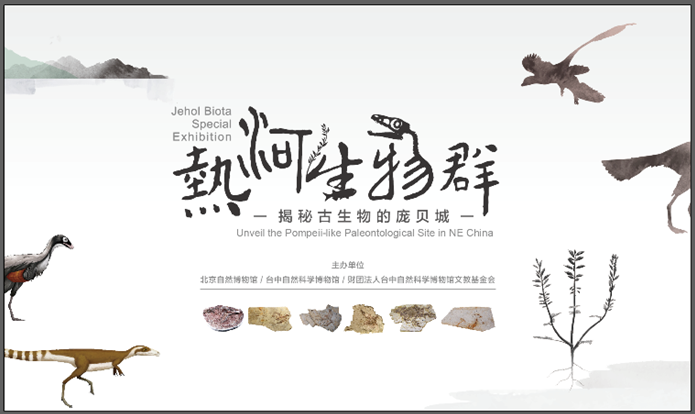
The Jehol Biota is an ancient East Asian biological community about 131 million to 120 million years ago. Its fossils are mainly discovered in northern Hebei Province, western Liaoning Province and middle-eastern Inner Mongolia of China, with Eosestheria, Ephemeropsis trisetali and Lycoptera as representatives. The environment during this period was warm and humid with active volcano eruptions, while most of the aquatic life lived in freshwater lakes. Toxic gases emitted by volcanoes killed huge numbers of creatures, whose remains were quickly buried by volcanic ash, thus allowing fossils to be perfectly preserved. This is how the name “Mesozoic Pompeii” came into being. In the past 30 years, a large number of rare fossils have been discovered in the Jehol Biota, which enriched the biological assemblage of this area and provided crucial clues and examples for research on the evolution of the earth’s ecosystem. Among the findings are over 60 “super star fossils” including “feathered dinosaurs”, “dinosaurs that flew into the sky” and “the great-grandmother of all placental mammals”.
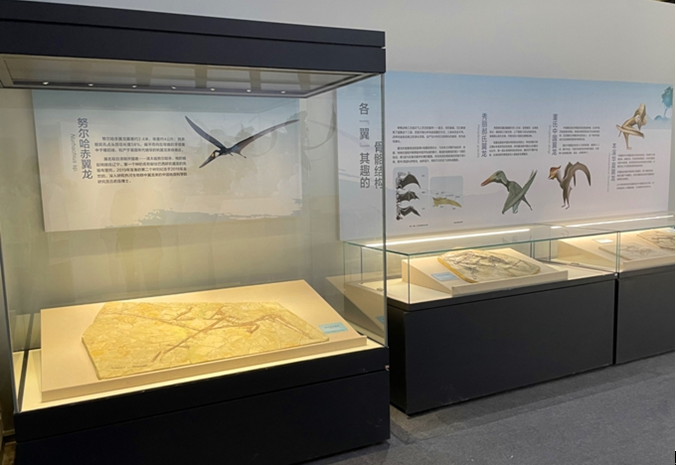
Part of the exhibition
Let’s have a look at some of the superstars in this exhibition:
This is a specimen of Eomaia scansoria, an ancestor of placental animals, with a complete skeleton and even some hair and cartilage tissue.
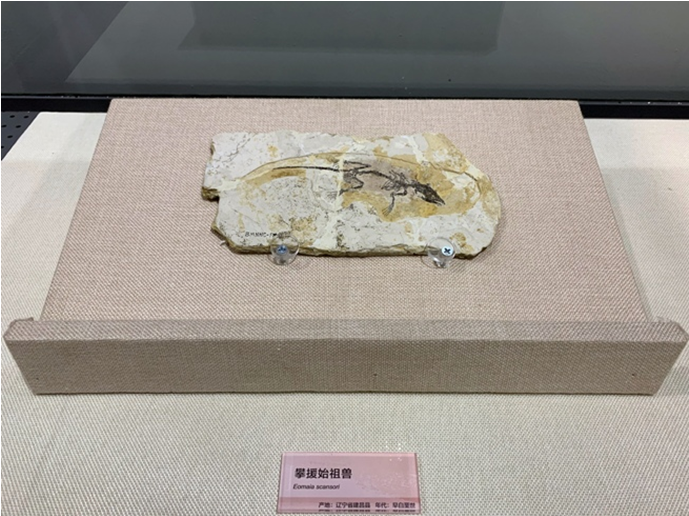
The ancestor of placental animals -- Eomaia scansoria
The ancient creatures were exquisitely preserved in 3D as they were promptly buried by volcanic ashes. For example, ancient animal skin are clearly visible on the following two precious specimens.
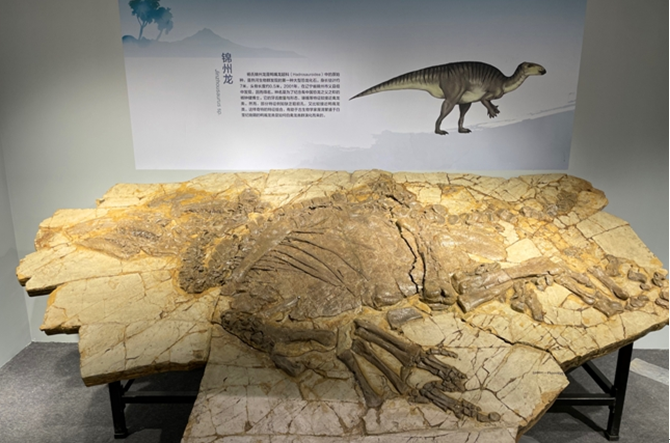
A large iguanodontid with fossilized skin -- Jinzhousaurus yangi
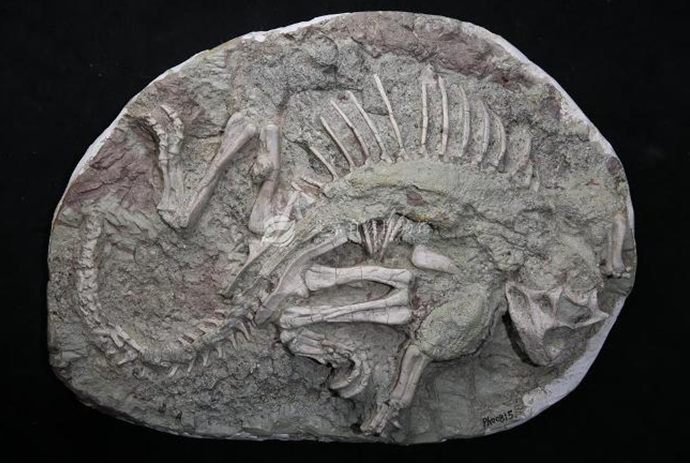
The famous “dinosaur mummy” – a fossil of Psittacosaurus within the matrix
According to paleontologists, Microraptor gui, “the dinosaur that flew into the sky”, were equipped with sufficient feather structure and function for flying, allowing them to rise above the land. In further research on dinosaur feather, scientists even restored the feather colour of Microraptor gui. Thanks to that, now we are lucky enough to appreciate the demeanour of this little black-feathered creature.
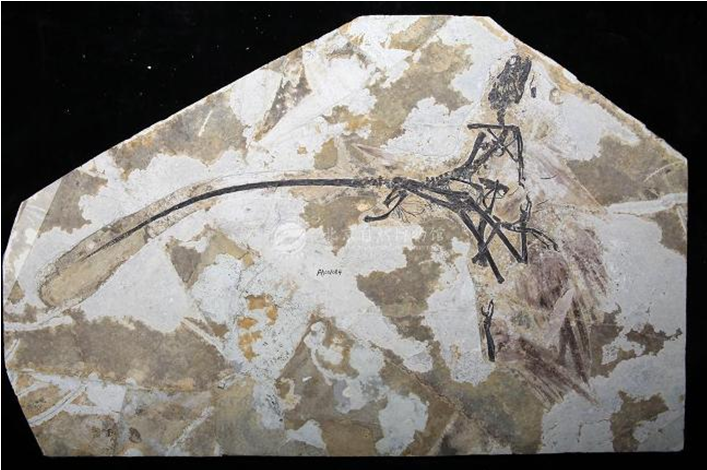
The earliest known small theropod with pigment-bearing cells -- Microraptor gui
The next specimen marks the emergence of primitive birds. Confuciusornis sanctus, which has different feather condition from Microraptors, providing another strong evidence for bird evolution.
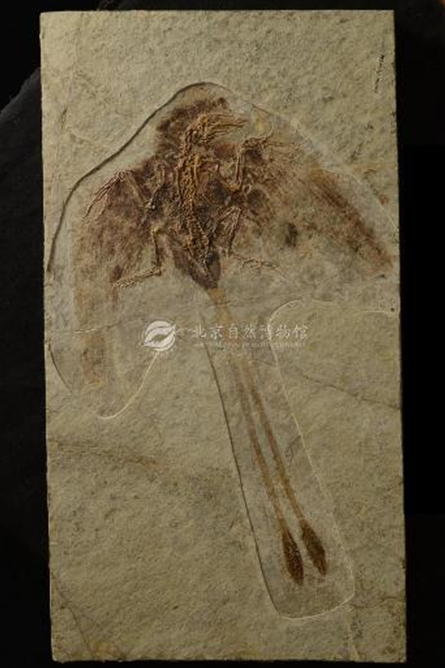
A basal bird -- Confuciusornis sanctus
This is a precious fossil specimen of the plant Archaefructus liaoningensis, an early angiosperm known as “the First Flower”. Embedded in slates, the plant reveals that flowering plants appeared as early as over 100 million years ago, marking the beginning of the Cenozoic angiosperm prosperity.
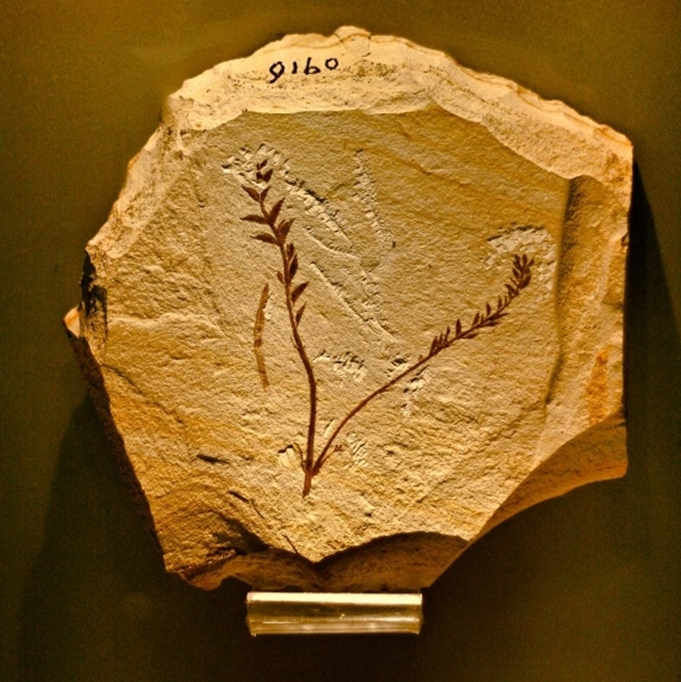
An early angiosperm -- Archaefructus liaoningensis
Apart from the above-mentioned items selected from the Johol Biota exhibition, other important fossil discoveries, including pterosaurs, Dilong paradoxus, and “Four Chinese Flowers” are not to be missed. For our teenager visitors, the main designer of the exhibition from our partner for this exhibition, Taichung Museum of Natural Science, ingeniously used traditional Chinese performing arts like shadow puppets, peep show and Xiangsheng to tell science stories about evolution. Fun, artistic and scientific, the exhibition appeals to our younger visitors.
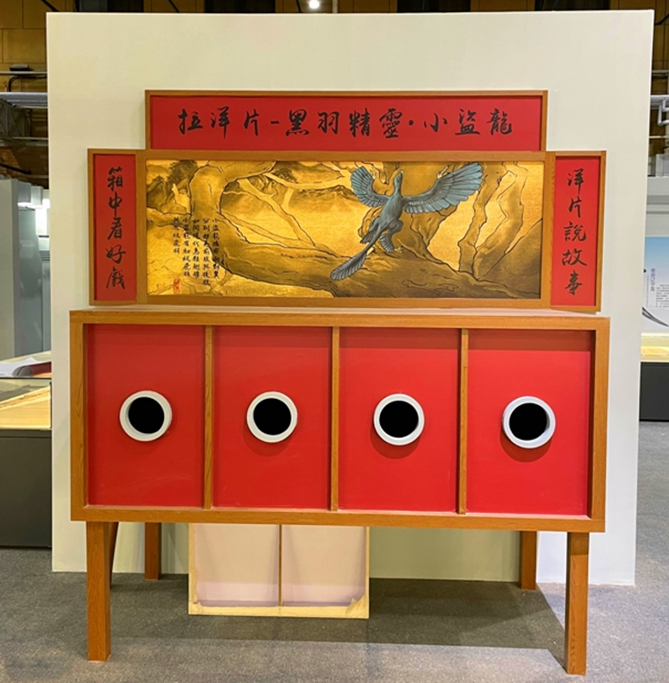
An interactive peep show
The grand exhibition of Johol Biota is a gathering of ‘fantabulous’ fossil collections, as well as an integrated display of the research capacity and achievements of the Beijing Museum of Natural History. The museum’s mission is to collect remains and physical evidence of natural history, to focus on natural science research and communication, and to serve the society and the public. In light of this, the museum collected a large number of paleontological specimens of the Johol Biota and the Yanliao Biota over the years, and has conducted fruitful research, with many findings published in internationally renowned journals such as Nature and Science.
The exhibition is co-organized by the Beijing Museum of Natural History, the Taichung Museum of Natural Science, and the Taichung Museum of Natural Science Cultural and Educational Foundation. From November 2019 to May 2020, it was exhibited at the Taichung Museum of Natural Science, which started an upsurge of paleontological science reports by public media and science influencers in the Taiwan region. This cooperation has expanded cross-straits academic cooperation and cultural exchanges, promoted innovative incorporation of high-tech in palaeontological research and science communication, and reflects the cultural responsibility and historical mission of scientific and cultural institutions in the new era.
The Johol Biota exhibition was on display in the Beijing Museum of Natural History from Nov. 28 to Dec. 20, 2020.